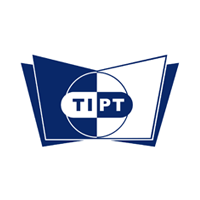
In the pharmaceutical industry, accuracy is essential. Because medication has a significant impact on people’s health, there is little margin for error. Avoiding error in the design and manufacture of pharmaceuticals is partially achieved through quality control.
Whereas the majority of quality control measures were once done manually, automated systems have now been implemented to help eliminate errors. Read on if you’re curious about how automation has been transforming the pharmaceutical industry!
Automation as a Substitute for Human Intervention
To err is human, it is said. Human… not robotic. While human involvement is essential to many aspects of pharmaceutical design and manufacture, automation can help reduce the probability of human error. Moreover, automation can help reduce the number of manual steps involved in production, such as incubation transfers, colony counts, data entry, and other repetitive tasks that consume a vast amount of time. Because the addition of a manual step in the production process increases the likelihood of an error, reducing the need for additional steps can ultimately help diminish the risk of such errors.

Introducing a new medication to the market is an extensive process and it can take up to twelve years from the moment of conception to the moment a new drug is available for public use. Because of this long timeline, ensuring pharmaceutical quality control is implemented at every stage of research and development helps to ensure that unnecessary delays can be avoided. Automation helps on this front, as well. Analysis, for example, is a crucial part of med-design. Only 5 in 5,000 drugs that enter preclinical testing are approved for human testing. With the ability to identify errors immediately with the help of automation, those errors can be corrected faster and analysis can be sped up.
Automation Can Help Decrease the Risk of Cross-Contamination
Cross-contamination is an important concern in pharmaceutical manufacturing as it can decrease the effectiveness of pharmaceutical drugs and potentially put patients and consumers who use those drugs in harm’s way. Essentially, cross-contamination is the presence of an unwanted particle or substance in a starting material, intermediate product, or finished product. It can jeopardize product development and might be instigated by something as benign as dust, microscopic airborne bacteria, or even residue from another product.
Avoiding cross-contamination is an integral part of quality-control. Again, automation can help reduce the risk of cross contamination, which also often occurs because of human error. With a vigilant and intelligent automated system, manufacturers can, as we have mentioned, reduce human error, which in turn can help reduce cross-contamination.
Automation Is a Tool for Professionals in Pharmaceutical Quality Control
Of course, you may be wondering if the increasing use of automation in quality control will make pharmaceutical quality control professionals unnecessary. In fact, automation does not replace quality control professionals; rather, it helps them do their jobs more effectively. As you’ll learn in your quality control course, quality assurance and quality control (QA/QC) personnel are responsible for developing, monitoring, and overseeing quality assurance and quality control measures and ensuring that the manufacturer is meeting government requirements. Additionally, these personnel conduct sampling and testing to ensure products are safe and effective. While all of these responsibilities can be performed much more efficiently with the help of automation, ultimately human personnel are essential to the entire QA/QC process.

Want to complete a quality control diploma?
Find out how the Toronto Institute of Pharmaceutical Technology can help you get there.
